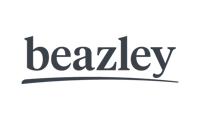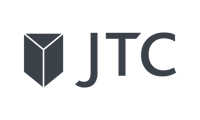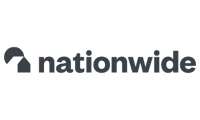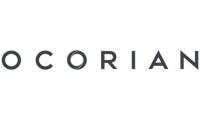Your guide to board assessments
Learn what board assessments are and why they are essential for good governance.
High-performing boards are a source of competitive advantage. But how can boards ensure they’re functioning effectively, making the right decisions, and providing strong oversight?
That’s where board assessments come in. A well-executed board assessment offers a powerful opportunity to reflect, identify strengths and weaknesses, and drive continuous improvement. In this guide, we explore why board assessments matter, what they involve, and how they can unlock better, more strategic governance.
What is a board assessment?
A board assessment is a formal evaluation of a board's performance and effectiveness. It focuses on how the board of directors operates and how well they fulfil their roles and responsibilities. An assessment identifies a board's strengths, weaknesses, and gaps. It provides a valuable opportunity to improve board effectiveness, support good governance, and align leaders with the organisation's strategic goals.
Regulatory requirements and best practices
Board evaluations (or board assessments) are a common requirement under corporate governance regulations, local laws, and stock exchange rules. For instance, listed companies in the UK, France, and Sweden are expected to carry out annual board evaluations and disclose key details of the process and results in their annual reports. In the UK and France, certain listed companies must also undergo an external evaluation at least once every three years.
In the USA, the New York Stock Exchange (NYSE) mandates annual board assessments but leaves the method and level of disclosure up to each company. Meanwhile, NASDAQ doesn't require formal evaluations, although many listed companies still choose to do them to show a strong commitment to governance.
Globally, it's widely regarded as best practice to evaluate not just the board as a whole, but also to conduct committee, Chair, and board directors' assessments. These evaluations should be well-structured, impartial, and cover the areas that are key to board effectiveness — from board composition and diversity to management relationships and decision-making.
Facilitated evaluations that harness data and expert insight to enhance board conversations and performance.
Get a board effectiveness reviewHow do you conduct a board assessment?
The board assessment process must be thoughtful and well-executed, from preparation to follow-through. This section will guide you through the full board assessment journey, covering everything from choosing the right approach and crafting insightful questions to presenting findings and developing a practical action plan. You'll also learn how to implement changes effectively and measure long-term progress, ensuring that your assessment drives real improvement.
Preparing for your board assessment
Conducting a comprehensive board assessment requires a structured approach. Include these steps to ensure you are well prepared:
- Establish clear objectives, scope, and stakeholder expectations.
- Select an assessment method that aligns with your organisation's culture and governance maturity, and your board's goals and priorities.
- Design effective questions that probe beyond surface-level satisfaction to examine critical governance functions, board dynamics, and strategic oversight capabilities.
- Establish robust systems for collecting and analysing feedback that preserve confidentiality while generating actionable insights about board performance.
Selecting the right assessment method
Choosing the most suitable evaluation method depends on your objectives and business. It can involve using a digital board survey platform or conducting a structured, in-depth review supported by data and analytics.
At Board Intelligence, our team of expert reviewers follows a methodology shaped over two decades and tailors our approach to each client's needs. Our board assessment framework is thorough and rooted in a strong understanding of what drives effective boards, through the science of board effectiveness.
We evaluate boards and committees based on three core areas traditionally associated with effectiveness:
- The people
- The quality of information
- The supporting structures
We also assess two often-overlooked dimensions:
- How the board drives impact
- How it fosters innovation
Collectively, we refer to these five focus areas as the "5 I's of board effectiveness": individuals, information, infrastructure, innovation, and impact. A board performance review should explore each one in depth. Read below to find out how these five levers for board performance can be used to design effective questions for your board assessment. You can also find out more about our methodology and the types of board assessments we offer and read our research on board evaluation trends.
Designing effective questions
You need questions that surface your board's strengths and weaknesses. They should serve as a practical tool for enabling constructive conversations about board performance.
1. Structure your questions around the key pillars of board effectiveness
Use a structured framework like the 5 I's of board effectiveness to ensure your questions are comprehensive and balanced across all critical areas. Download our Board Effectiveness Checklist to find 10 high-impact questions to get you started.
For example:
- Individuals: Do we have the right skills?
- Information: Are board materials driving the right conversations?
- Infrastructure: Are we focused on the right things?
- Innovation: Are we leveraging emerging technologies?
- Impact: How do we add value?

2. Make questions open-ended and reflective
Avoid closed, yes/no questions (although they are useful for creating baseline metrics that can be tracked consistently over time). Instead, ask open-ended questions that prompt honest reflection and discussion.
For example, instead of asking "Is the board effective?", try asking "What evidence do we have that the board is positively influencing strategic outcomes?"
3. Focus questions on behaviours and outcomes, not just structures
Effective questions probe into how the board operates and what impact it delivers, not just whether certain practices exist.
For example:
- How does our meeting structure enable (or hinder) constructive debate and timely decision-making?
- What have the board's most impactful contributions been in the past year?
4. Tailor questions to context and strategy
Generic questions miss opportunities. Align your questions with the organisation's unique context, priorities, and external environment.
For example:
- How well is the board equipped to oversee our transition to an AI-powered business model?
5. Include forward-looking and developmental questions
Effective boards are not just evaluated on past performance, but on their readiness for the future. High-quality assessments include questions about board and director development plans.
For example:
- What new capabilities or perspectives will the board need to stay effective over the next three to five years?
6. Use questions to encourage candour
Questions should create space for constructive challenge and honest feedback, especially around leadership, culture, and group dynamics.
For example:
- Does the board culture support challenge and diversity of thought? If not, what gets in the way?
As Helle Bank Jorgensen, experienced board reviewer and head of Board Intelligence's board development practice puts it: "The best evaluations create a space that's honest and brave, where directors feel safe enough to speak candidly and curious enough to listen differently" (watch the interview with Helle to find out more).
Collecting and analysing feedback
Effective feedback collection and analysis are about more than gathering opinions—they're about extracting strategic intelligence. When done well, they build the foundation for a board that is not only reflective but future-fit and continuously improving.
- Choose the right method: Use digital surveys for efficiency, interviews for depth, and facilitated sessions for group dynamics. You can also gather information from board papers, meeting minutes, and agendas. A blended approach often provides the richest insight.
- Ensure confidentiality: To gather honest, constructive feedback, board members need to feel that their input is both confidential and valued. Use independent facilitators where appropriate and make it clear that all feedback will be synthesised, not attributed to any individual.
- Identify themes and patterns: Group responses according to the 5 I's (individuals, information, infrastructure, innovation, impact). Look for trends, misalignments, and opportunities for change.
- Blend data with context: Combine ratings with written feedback. Quantitative scores highlight trends; qualitative responses explain them.
- Turn insight into action: Translate feedback into clear, actionable recommendations tied to board development, future strategy, and cultural change.
Presenting results to the board
Presenting evaluation results is your chance to turn data into direction. With the right framing, tone, and context, it becomes a catalyst for better conversations, better decisions, and ultimately, a better board.
1. Focus on clarity and relevance
Boards have limited time available, so be selective and keep the format concise, visual, and jargon-free. Make data accessible using dashboards, heatmaps, or simple themes.
2. Tell a balanced story
Be honest about gaps but also recognise what’s working. This builds trust and encourages open discussion rather than defensiveness.
3. Highlight strategic implications
Connect findings to the board's role in enabling performance, managing risk, and shaping the future.
For example:
- "Board materials lack clarity" translates to "potential blind spots and risk of oversight failures".
- "The board doesn't encourage a culture of innovation" translates to "exposure to strategic vulnerabilities and missed growth opportunities".
4. Encourage reflection as well as reaction
Use the presentation as a springboard for dialogue by posing discussion prompts like:
- What stands out to you?
- What surprised you?
- Where do we go from here?
Developing an action plan
Conclude your board assessment by outlining a clear, actionable plan to ensure your findings lead to real change. Identify two to three priority areas for improvement and translate these into specific actions. For example, if the board pack lacks clarity, redesign templates with clear summaries and asks.
Implementing changes to improve board effectiveness
Assign task ownership to the appropriate individuals or committees and set realistic timelines for implementation. To maintain momentum, include checkpoints for reviewing progress at future meetings. This ensures the evaluation moves beyond insight to drive tangible governance, culture, and performance improvements.
Measuring progress and impact
Start by revisiting the goals and priorities set out in the action plan.
- Has board performance improved in those areas?
- Is the board seeing the impact expected of those changes?
Assess developments using a combination of methods, such as follow-up surveys, progress reports, and feedback from board members. A data-driven approach to board evaluation brings objectivity and clarity to assessing board effectiveness, allowing comparisons with peers, tracking trends over time, and identifying performance patterns.
It's also important to look beyond the process to the impact. Ask how the board's effectiveness has influenced decision-making, risk management, and innovation. Finally, build this into an ongoing cycle of reflection, action, and review, aimed at helping the board stay agile, accountable, and future-fit.
What are the different types of board assessments?
Board evaluations come in various forms, including:
- Self-assessments
- Peer reviews
- Chair evaluations
- Committee evaluations
- External reviews by independent experts
- 360-degree feedback involving executives and stakeholders
Combining these methods offers a rounded assessment of board performance, leading to deeper insights and more effective, actionable recommendations.
Full board performance evaluations
A full board performance review is a comprehensive evaluation of how well the board is fulfilling its responsibilities and adding value to the organisation. It typically covers multiple dimensions of effectiveness, such as board composition and skills, and chair and individual director effectiveness.
Individual director assessments
These assessments evaluate the performance, contribution, and development needs of each board member. They focus on how well directors prepare for and participate in meetings, and how they engage in constructive conversations.
Committee effectiveness reviews
These are targeted assessments that examine the performance and effectiveness of individual board committees. These reviews assess clarity of remit and alignment with the board’s objectives, and the quality of reporting and decision-making.
Chair evaluations
Chair evaluations assess the effectiveness of the board's leader, focusing on how well the chair facilitates meetings, fosters inclusive debate, builds trust, and guides the board's strategic direction in alignment with the organisation's values.
What are the key benefits of board assessments?
Board assessments offer a critical chance for boards to pause, reflect, and assess the value they’re delivering. They support boards in sharpening their purpose, spotting areas for improvement, and taking meaningful steps to boost their effectiveness.
When done regularly, these reviews help boards respond to evolving needs while ensuring they meet their fiduciary duties and enable organisational performance.
Identifying governance strengths and gaps
Board evaluations serve as diagnostic tools that reveal critical vulnerabilities in governance frameworks, identifying deficiencies in policies, structural weaknesses, and operational shortcomings that may otherwise remain hidden. Through systematic analysis of board operations, processes, and outcomes, these assessments clarify confused or overlapping responsibilities and highlight areas where oversight falls short of the required standards.
Enhancing board dynamics and culture
Board assessments provide a structured approach to assessing director relationships and collaboration, providing a safe space for candid feedback and enabling the voicing of unsurfaced concerns and tensions. They examine whether boards engage in constructive feedback and effectively challenge (or fall victim to) conflict and groupthink. By evaluating communication patterns, engagement levels, and board culture, assessments also identify interpersonal issues and recommend improvements to enhance relationships.
Improving strategic decision-making
Effective boards make timely, informed decisions that contribute to organisational success. Evaluations uncover obstacles like unclear roles or poor information flow, helping streamline processes and sharpen focus. By improving meetings, roles, and reporting, evaluations boost decision-making, risk management, and overall governance impact.
Meeting stakeholder expectations
When the insights and recommendations are specific, rigorous, and evidence-backed, key stakeholders are more likely to engage with them, and the board will act on them. A data-driven board assessment provides clear evidence to stakeholders, reinforcing transparency, accountability, and trust.

Work with Board Intelligence’s team of board effectiveness experts to set your board up to succeed.
Find out moreHow do you start a board assessment?
From designing self-assessments to providing external evaluations, Board Intelligence provides tailored assessment solutions that unlock value creation. We do this through:
- Flexible solutions for every board, from quick digital pulse checks to in-depth external reviews led by board experts.
- Bespoke evaluations for individual directors, committees, and regulated entities across all governance models.
- Using our best-practice survey library or creating a fully customised review to suit your specific goals.
Consultation process
If you'd like to find out more about Board Intelligence's board assessment services or explore our board management software solutions, complete our online demo booking form and a member of our team will be in touch.
Tailored solutions
Because one size does not fit all, we offer a range of options, from technology-enabled surveys to facilitated reviews. We also offer custom reviews for committees and subsidiaries across all governance structures, from mutuals to listed companies.
FAQs
-
What is Board Intelligence's performance assessment solution?
We’ve created a board assessment framework rooted in 20 years’ insights into the science of board effectiveness. It drives a deeper understanding of board performance, with a specific focus on the board’s role in long-term value creation.
-
How does performance assessment differ from board evaluations?
Board evaluations assess how effectively the board functions as a whole, while performance assessments focus on the outcomes and accountability of individuals or specific roles within the board.
-
What types of assessments are supported?
Board assessments include self-assessments, peer reviews, external evaluations and 360-degree reviews. We offer full-board performance evaluations, individual director assessments, committee reviews, and chair evaluations.
-
How does the board assessment process work?
The process involves gathering feedback through surveys, interviews, or reviews to evaluate the board’s effectiveness, identify areas for improvement, and develop actionable recommendations. The approach can be tailored to your situation and needs.
-
What analytics are available?
Analytics typically include quantitative scores, trend data, benchmarking against peers, and qualitative insights that highlight strengths, gaps, and opportunities for improvement.
What is board effectiveness?
Board effectiveness refers to how well a board of directors fulfils its responsibilities. These responsibilities are set out in company law and supplemented by corporate governance codes and guidelines, which vary by country and sector.
Beyond compliance with relevant laws and regulations, board effectiveness also relates to how well a board performs its supervisory and steering roles.
The board’s supervisory role is focused on monitoring the delivery of short-term performance. When performing this role, directors are seeking assurance and managing risk. They are concerned with the organisation’s near-term outlook and whether the business will deliver its operational and financial goals.
The board’s steering role is focused on enabling sustainable, long-term value creation. The board is in steering mode when considering strategy and making significant investment decisions. When fulfilling this role, directors must be strategic, forward-looking, and consider a wide range of external factors, so that they can shape management's thinking and make high-quality decisions in alignment with the organisation’s purpose and values.
The most effective boards excel in both roles to deliver short-term goals and long-term vision.
Why does board effectiveness matter?
Boards impact the key drivers of organisational performance, from CEO succession planning and financial strategy to sustainability and culture. By setting the organisation’s strategy and goals, they define the parameters within which decisions are made throughout the organisation. This shapes how resources are allocated and outcomes are achieved far beyond the boardroom. They also ensure the organisation maintains its license to operate by proactively monitoring and responding to risks and complying with relevant laws and regulations.
Many academic studies have explored the link between effective boards and successful organisations. The most powerful reminder of the importance of board effectiveness, however, comes from a different source: the government-led inquiries and lawsuits that follow in the wake of corporate scandals. Their conclusions, and the evidence that emerges through them, highlight the importance of an engaged and effective board in preventing corporate failure, with boards having been implicated in high-profile collapses from Enron and Blockbuster in the US to Carillion and BHS in the UK.
As the Institute of Directors found in their analysis of the UK Post Office scandal, “the root causes were failures in human decision-making, organisational culture and business ethics. Post Office governance – and specifically the board of directors – proved unequal to the task of addressing these issues.”
What are the three pillars of board effectiveness?
Effective boards are built on three pillars: individuals, infrastructure, and information. These pillars form the backbone of how a board functions and delivers impact.
Individuals
Having the right people around the table, and ensuring those people behave in the right way — as individuals and as a group — is essential. Boards with diverse skills, relevant experience, and a culture of collaboration are more likely to be able to navigate complexity, think creatively, and make high-quality decisions.
Infrastructure
Having appropriate policies, tools, and processes in place creates a strong framework for ethical and compliant decision-making. It also ensures board operations are efficient, so that the board delivers satisfactory value-add in return for the resources required to support it.
Information
Accurate, timely, and well-presented information ensures directors understand the drivers of performance while enabling them to think creatively and make high-quality decisions. They need information that covers the relevant topics in appropriate detail to enhance their knowledge and stimulate productive discussions.
What do top-quartile boards do differently?
The three pillars of board effectiveness are key to building a well-rounded board that fulfils its various responsibilities. The most successful boards, however, demonstrate two additional characteristics that enable them to deliver even greater value: they are impact-focused and have an “innovation mindset”.
Impact-focused
Highly effective boards actively contribute to organisational strategy, testing the viability of current business models and building alignment at all levels. When boards are focused on impact, they inject momentum and agility into the organisation’s decision-making, enabling it to go further, faster.
Innovation mindset
High-performing boards are future-focused, lean into emerging trends, and invite external perspectives to ensure the organisation stays ahead of the innovation curve. They value disruptive thinking and encourage a culture of rapid experimentation.
What are the key factors affecting board effectiveness?
A wide range of factors can impact board effectiveness. That is, in part, because boards are not homogeneous; the average public company board has between 9 and 11 directors, all of whom bring a different set of skills, experiences, and personality traits into the group.
Some of the key board effectiveness factors to consider include:
- Composition: The board’s performance will be heavily influenced by its size and shape — for example, the number of members, balance of executive and non-executive members, and the knowledge, expertise, and backgrounds of individuals. A more diverse group will analyse situations from a wider range of angles and bring more ideas to the table, and this ultimately drives better outcomes. A 2023 McKinsey study, for example, found that companies in the top quartile for board-gender diversity were 27% more likely to outperform financially than those in the bottom quartile.
- Culture: A collaborative, open-minded culture that encourages challenge, debate, and the expression of ideas will enable the organisation to tap into the knowledge and expertise of board members. It will also support the board in understanding performance and shaping robust decisions. Research shows that simply giving people “permission to debate” drives better outcomes.
- Mandate: It’s important that the board is clear on its roles and responsibilities, and that the wider organisation understands its role too. This focus and alignment ensures directors can engage with the right issues in the right way, at the right time, and that its performance can be more easily assessed.
- Strategy: The organisation’s strategy shapes what is required from the board. If the business is pursuing an M&A strategy, its board will need a different set of skills and experiences to shape and execute this strategy compared with a turnaround or restructuring situation, for example.
What are the common challenges affecting board effectiveness?
Only 30% of executives rate their boards as “good” or “excellent”. Meanwhile, 62% of CEOs want to replace one or more of their directors. This research by PwC suggests there is significant room for improvement in how boards operate and that some of the factors listed above can be difficult to influence without appropriate tools and resources.
Common challenges include a lack of diversity, inadequate training, crowded meeting agendas, and limited access to timely information. These issues can hinder the board’s ability to address complex issues and make timely and informed decisions.
For example, research by Board Intelligence shows that fewer than half (48%) of directors and governance professions get value from their board papers and the average agenda item gets only 21 minutes of discussion time.
By offering targeted education and professional development opportunities, taking a strategic approach to agenda planning, and providing best practice report-writing guidance to management, boards can overcome these obstacles and improve their performance.
How do you measure board effectiveness?
Measuring board effectiveness generates valuable insights that can help to improve the board’s performance and enhance its contribution to organisational success.
Through regular board evaluations, whether self-assessments or facilitated external board performance reviews, boards can identify their strengths and weaknesses and benchmark their performance against best practice and regulatory standards. This allows the chair and company secretary to identify gaps and take proactive steps to improve the board’s effectiveness. Technology tools can also gather and analyse data on board processes, activity, and impact, to help the board develop a continuous improvement mindset.
According to research conducted by Board Intelligence in December 2024, only 17% of executives believe their boards are set up to harness the opportunity around AI. To navigate new challenges and risks and exploit emerging opportunities, boards need to regularly reflect on their performance. By identifying gaps, boards can take proactive steps to stay ahead of industry demands and deliver forward-looking guidance that helps their organisations to thrive in the long term.
How can you improve board effectiveness?
Improving board effectiveness is crucial for achieving long-term business success. The most effective boards have optimised their processes and practices in the following ways:
- Board composition and culture: A diverse board with directors who have a wide range of relevant skills, expertise, and experiences can significantly impact board effectiveness. You can strengthen your board by conducting regular skills audits, recruiting for diversity, and offering continuous learning.
- Board collaboration and communication: Effective communication and collaboration are essential for a high-performing board. Planning effective meeting agendas, providing directors with high-quality board reports which include insightful KPI dashboards, and distributing materials early, for example, will ensure that board members are well-informed. This drives more productive discussions and more impactful decisions.
- Board focus and priorities: Having a clear sense of priorities, role, and responsibilities helps boards to invest their time and effort where it’s likely to have greatest impact. You can make it easier for the board to focus on what matters by clarifying the board’s mandate, mapping out individual directors’ roles and responsibilities, and engaging in an annual prioritisation and planning process.
- Meeting management: Effective meetings are the hallmark of effective boards. To improve the productivity of meetings, you should clarify meeting objectives, review materials and ask clarification questions in advance, and use technology tools such as a board portal or agenda planning software to streamline processes.
How do you manage a board effectively?
Managing a board isn’t easy; that’s why the most effective boards are led by highly effective chairs and supported by skilled governance professionals.
Effective board management requires a careful balance of soft and hard skills – from a thorough understanding of the applicable laws and regulations to active listening and delicate diplomacy. It also requires:
- Rules of engagement: The chair and company secretary should set clear expectations for both management and board members — for example, around preparation requirements and meeting behaviour.
- Priorities: Boards have a vast remit and limited time. Understanding what matters, and building agendas and meeting materials around these priorities, is crucial for using board meeting time effectively.
- Accountability: A sense of accountability can be achieved by setting and monitoring appropriate key performance indicators (KPIs) for the board that align with its role and responsibilities and the organisation’s overall objectives.
- High-impact reporting: A thorough briefing process for management, a structured approach, high-quality writing and effective data visualisation will ensure board papers are easy to engage with, insightful, and actionable.
- Open communication: Information should be shared with the board on a regular basis. The chair should also encourage an open exchange of information and views by building an inquiring culture and recruiting directors with strong critical thinking
- Continuous improvement: A continuous improvement approach is commonplace in high-performing teams and should also be applied to boards. It’s made easier if the board has a clear mandate, relevant KPIs, and the tools with which to monitor its performance on an ongoing basis.
Delivering these requirements and building a diverse board with relevant skills and experience will enable the board to deliver value consistently and confidently.
Trusted by 70,000+ directors and executives across the Fortune 500, FTSE 100, and OMX 30.























Board evaluations rooted in science, not convention
Board effectiveness reviews that go beyond governance requirements and focus on the value and impact of your board.
- Board performance framework shaped by 20 years’ experience across thousands of boards.
- Analytics, data-driven insights and actionable recommendations.
- Custom reviews for different committees and subsidiaries across all governance structures, from mutuals to listed companies.

Team diagnostics that drive deeper insight
Don’t wait for a formal board or executive team evaluation; get real-time feedback for continuous improvement.
- Digital tools, analytics, and deep-dive assesssments led by our team of experts.
- Evaluate board and executive team performance drivers not typically covered by board evaluations — from agenda analytics and meeting materials to decision-making agility and innovation quotient.

See how your board pack stacks up
Find out if your board information is setting your board up to succeed — or getting in its way.
- Benchmark board and committee materials against best practice and your peers, with a framework shaped by our work on thousands of board packs.
- Identify strengths and opportunities for improvement with expert, data-driven analysis.
- Enhance board pack quality and impact with a bespoke transformation plan.

Put analytics at the heart of board agenda planning & reporting
Expert analysis and benchmarking of board and committee agendas to support effectiveness reviews and stakeholder (and UK s172) reporting.
- Analyse where and how effectively your board spends its time.
- Identify actions you can take to deliver more focused, forward-looking, and strategic board meetings.


